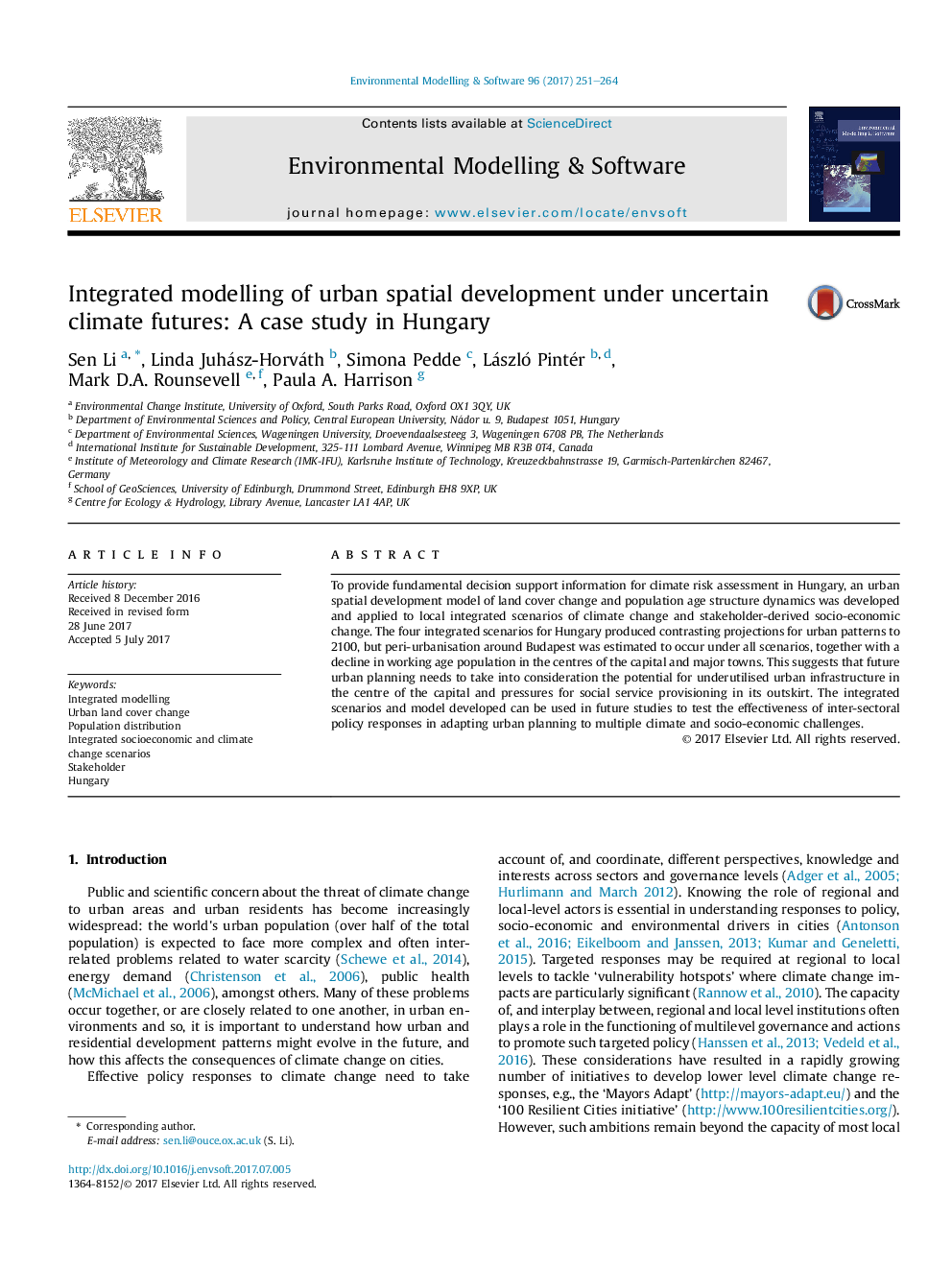| Article ID | Journal | Published Year | Pages | File Type |
|---|---|---|---|---|
| 4978251 | Environmental Modelling & Software | 2017 | 14 Pages |
Abstract
To provide fundamental decision support information for climate risk assessment in Hungary, an urban spatial development model of land cover change and population age structure dynamics was developed and applied to local integrated scenarios of climate change and stakeholder-derived socio-economic change. The four integrated scenarios for Hungary produced contrasting projections for urban patterns to 2100, but peri-urbanisation around Budapest was estimated to occur under all scenarios, together with a decline in working age population in the centres of the capital and major towns. This suggests that future urban planning needs to take into consideration the potential for underutilised urban infrastructure in the centre of the capital and pressures for social service provisioning in its outskirt. The integrated scenarios and model developed can be used in future studies to test the effectiveness of inter-sectoral policy responses in adapting urban planning to multiple climate and socio-economic challenges.
Related Topics
Physical Sciences and Engineering
Computer Science
Software
Authors
Sen Li, Linda Juhász-Horváth, Simona Pedde, László Pintér, Mark D.A. Rounsevell, Paula A. Harrison,
